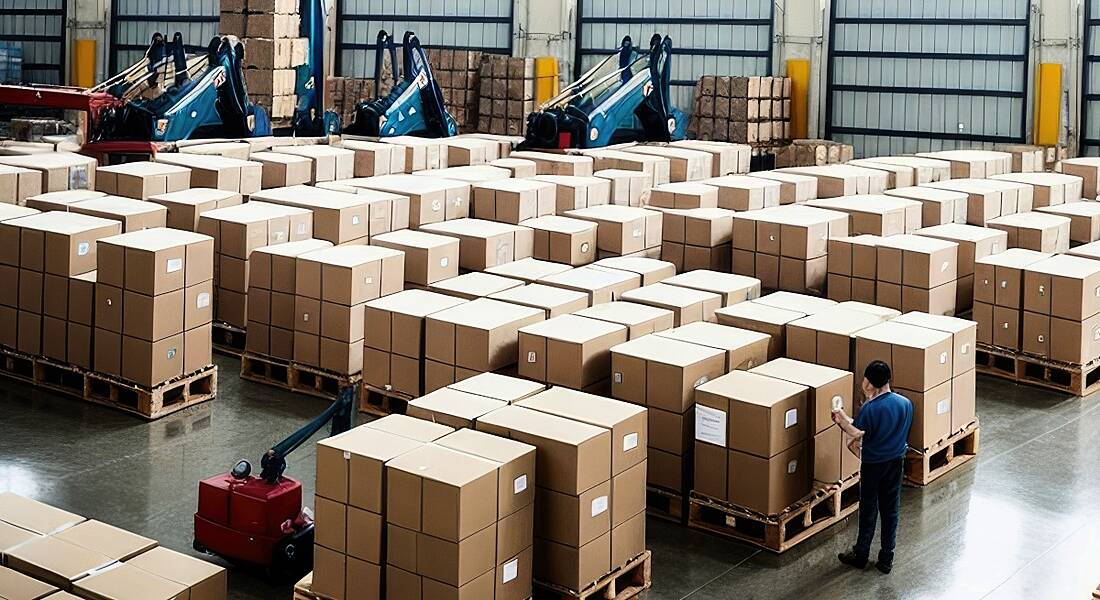Paul Malone, head of operations at the Baldonnel, Co Dublin distribution centre for United Drug, says the robots are really just ‘intelligent trolleys with iPads’.
When pharma distributor United Drug decided to go down the route less travelled to address staff shortages in its Baldonnel distribution centre, it was prepared to address concerns raised by existing human employees.
The company knew that there might be rumblings of unease from some workers over its strategy to deploy a series of robots to work alongside them. According to Paul Malone, head of operations at Baldonnel, the centre deployed 21 robots from a US company called Locus Robotics towards the back end of December 2022. The story was reported on by SiliconRepublic.com in May of this year, with Malone saying at the time that the strategy was going well and the robots were helping United Drug optimise the productivity of its human labour force.
But how does the set-up work day-to-day for the human warehouse workers Malone oversees? Do they resent the robots? Do the robots make loud “bleep bleep” noises? Are they a nuisance? We put some of these questions to Malone recently and he gave us an insight into how the system actually works – or doesn’t. He admits that it involved a lot of trial and error initially and the centre is still ironing out the finer details in consultation with the workers.
Malone says the robots are intended as “cobots” to existing workers. He stresses that the Baldonnel centre tried to find more people and retain the staff it has, but its location in City West on the outskirts of Dublin city was awkward for some to get to. They organise a bus to collect staff from the nearest Luas stop, which is still going, he says. They implemented the robots because people were “not readily available” to fill the roles that they had. “So this was a bit of a different way of doing things.”
He has a lot of praise for Locus Robotics, which worked extensively with the company and its employees at the distribution centre to try and understand where the main pressure points were and how the robots could alleviate them. Locus Robotics also helped allay some of the fears among United Drug staff that they were going to lose their jobs.
“There were probably undertones of people worrying, ‘Does this mean we’re going to lose jobs?’ and this type of thing, which obviously wasn’t the case,” says Malone. “The key thing we did was allay those fears and the Locus guys were very good at helping with that.”
More trolley than WALL-E
The robots are also not robots in the conventional sense. Malone describes them as “intelligent trolleys with iPads”. They can sense workers, machinery and other robots, but they don’t resemble a person in the slightest. The trolley robots go around to workers rather than workers having to waste time and energy walking from one end of the warehouse to the other.
“We could have 200 of these robots in the warehouse, but if we don’t have people to pick from them they’re no good to us,” Malone pointed out. “So that kind of allayed a lot of fears from the guys and they were saying, ‘Oh fair enough, it’s just something different, something new’.”
He explains that the trolleys coming around to the product pickers rather than vice versa means each picker is now assigned to a particular zone of four or five aisles. They cover that zone and the robots come around to them.
“We have added radios to the robots that connect to the team leads and the team leads can watch what’s going on on the overall heat map and he or she can guide the guys they need to come to a particular area.”
Malone says that most people were “very positive” even though it was a completely different way of working from what they were used to. “I suppose the only issue we might have had – which you’re going to get with these things – was around guys that operate forklift trucks or any kind of equipment in the area.”
“From the robot’s perspective, it sees everything and it can move around and make judgements and changes, whereas the forklift driver doesn’t necessarily have that ability.” Malone says the machinery drivers shared their concerns about crashing into the robots with management and with Locus Robotics. Together, they came up with a one-way system whereby the robots only go up a certain aisle or a certain way.
Not 100pc perfect, but more productive
“They now know when they enter a particular aisle where the robot is going to be so they can be a bit more vigilant,” says Malone, adding that it’s better but not 100pc perfect. “Now, I’m not saying we don’t have crashes. It’s a warehouse and in warehouses, things like this happen. But it’s a lot less than we had probably anticipated because we were able to plan for it.”
While concerns around crashes were a sticking point when it came to bringing the robots in, their presence means less heavy lifting and “unproductive footsteps” for the pickers. Malone tells us it has been “very positive” regarding accidents lifting heavy stuff, pulling heavy trolleys, all that type of thing.
Productivity is up too. “We’re up to about two and a half times the pick rate that we would have had before the robots and we’re aiming for three but we are just doing the last bits of tweaking the system. There’s a bit of work for us to do.”
At the moment there are no plans to bring the robots to any of the company’s other Irish facilities – a lot of these already have what Malone describes as “very expensive, very high-tech kit”. He wants to get another busy Christmas season under his belt first before he looks at expanding the robots to other areas of the warehouse.
10 things you need to know direct to your inbox every weekday. Sign up for the Daily Brief, Silicon Republic’s digest of essential sci-tech news.




